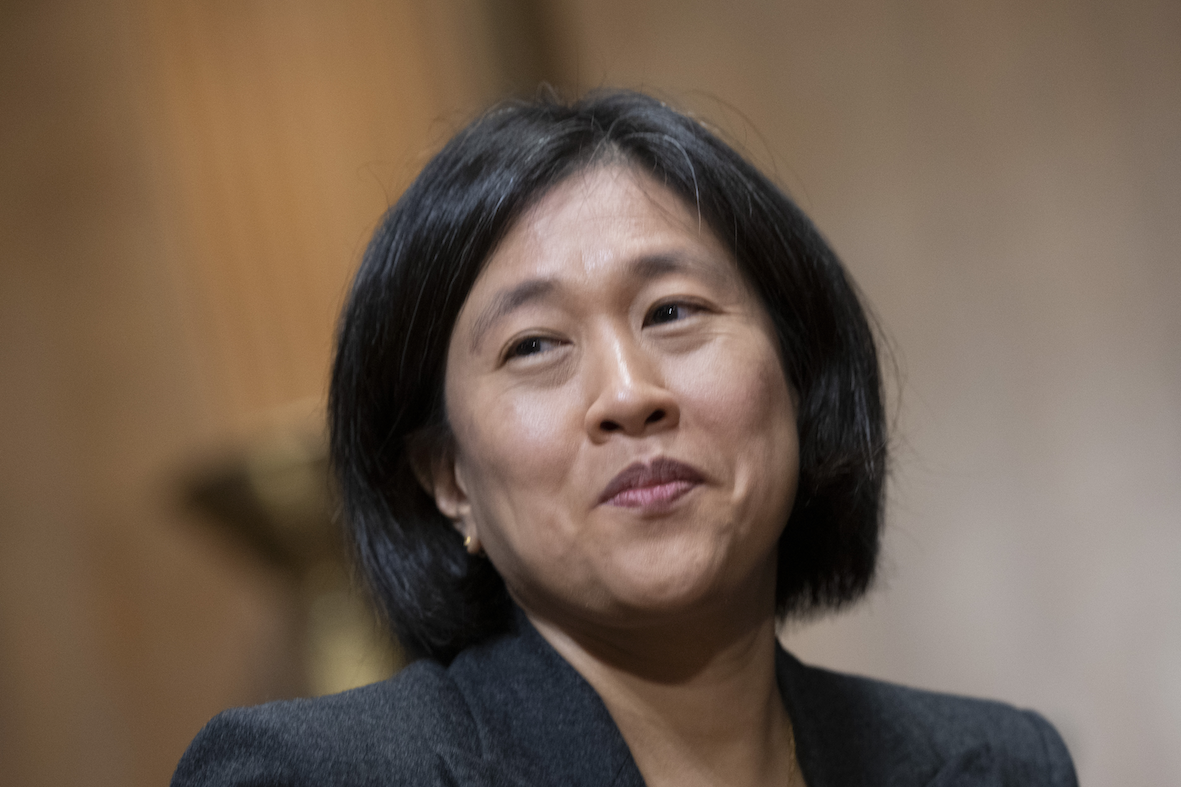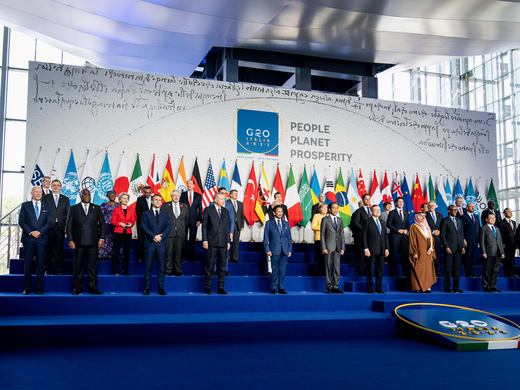On October 25, the United States announced at the World Trade Organization (WTO) that it was dropping its support for provisions meant to promote the free flow of data across borders. Also abandoned were efforts to continue negotiations on international e-commerce, to protect the source code in applications and algorithms (the so-called Joint Statement Initiative process).
According to the Office of the US Trade Representative (USTR): “In order to provide enough policy space for those debates to unfold, the United States has removed its support for proposals that might prejudice or hinder those domestic policy considerations.” In other words, the domestic regulation of data, privacy, artificial intelligence, online content and the like, seems to have taken precedence over unhindered international digital trade, which the United States previously strongly defended in trade agreements such as the Trans-Pacific Partnership (TPP) and the Canada-United States-Mexico Agreement (CUSMA).
Although the USTR had informed its trade partners prior to the announcement, the news came as a bombshell to the trade policy and business communities in the United States and abroad; they did not expect Washington to alter its support for open digital markets and the free flow of data across borders, seen as beneficial to US firms. The US Chamber of Commerce and many other major business associations immediately appealed to the National Security Council and National Economic Council by expressing their “profound concern and disappointment” about the USTR’s decision, in an open letter.
Opposition to the USTR’s change of heart did not just come from so-called “big tech” (the companies that have been the main beneficiaries of the United States’ previous position). A group of firms and associations representing “startups, small businesses, and entrepreneurs in the global digital economy” also expressed “deep concerns” about the USTR’s decision. They pinpointed that barriers to cross-border digital trade are more harmful to them than to their bigger competitors: “Unlike larger companies, smaller businesses with few product or service lines usually cannot shoulder the superfluous costs of data localization, technology transfer, prohibitions on encryption, and arbitrary application of regulation to American firms.”
The irony of the USTR’s decision is that it now makes an e-commerce agreement at the WTO more likely, removing the deadlock between China and the United States relating to exceptions to cross-border data flow and source code protection. The problem is that such an agreement, if it comes to pass, will be ineffective in fostering international digital trade. As such, it won’t be much different from the Regional Comprehensive Economic Partnership’s digital trade chapter.
The emergence of a noodle bowl of digital trade governance is the result of two strategic imperatives: one geo-economic, the other industrial.
Where Were We Before?
Until the USTR’s decision, the international governance of digital trade had been experiencing a proliferation of agreements. Stephanie Honey coined this trend the “digital noodle bowl,” in reference to Jagdish Bhagwati’s “spaghetti bowl,” which described the increasing number of bilateral and regional trade agreements, some overlapping, agreed to in the 1990s. Using noodles instead of spaghetti as the metaphor is meant to emphasize that the Indo-Pacific region is the centre of gravity for digital trade agreements as opposed to the traditionally dominant North Atlantic region.
The emergence of a noodle bowl of digital trade governance is the result of two strategic imperatives: one geo-economic, the other industrial. According to the geo-economic logic, a country’s policy decisions regarding the governance of international digital trade is driven mainly by what other countries do. The industrial logic, for its part, implies that governments devise their digital trade policies to improve their domestic economy’s international competitiveness, with limited regard for what the rest of the world does. The goal here is to position their economy as a digital trade leader, in terms of both economic activity and standards setting.
The United States’ approach to the governance of international digital trade began with an industrial logic: protecting US firms’ access to foreign markets by imposing, in its trade agreements, strict provisions aimed at limiting cross-border digital trade flows. This is what we find in the TPP’s (now the Comprehensive and Progressive Agreement for Trans-Pacific Partnership, or CPTPP) e-commerce chapter and CUSMA’s digital trade chapter. It was also the position espoused in the WTO negotiations until a few weeks ago.
In the last couple of years, however, the United States has moved toward a geo-economic logic in its approach to governing international digital trade, in response to China and the European Union. For instance, the Global Cross-Border Privacy Rules (CBPR) Forum is both a response to the European Union’s General Data Protection Regulation and an attempt to take privacy rule governance out of the Asia-Pacific Economic Cooperation because the latter includes China. The inclusion of the Global CBPR Forum within the US Indo-Pacific Economic Framework (IPEF) is also seen as a strategic response to draw countries in the region away from China’s digital orbit. With respect to IPEF’s other digital trade provisions, negotiations now appear to be on hold, following the USTR’s October 25 decision.
For its part, the European Union has focused on establishing a whole set of laws and regulations to govern the digital part of Europe’s economy and society in an attempt to promote a digital single market within its borders. Any influence on governance standards beyond its borders through the so-called “Brussels Effect” has been secondary and primarily aimed at supporting the European Union’s internal market.
However, the European Union has recently been negotiating bilateral digital partnership agreements (for example, with Japan, Singapore and South Korea). This new approach to governing digital trade can only be understood in response to such agreements being negotiated by other countries and the fear that it will be left out of China’s and the United States’ attempts to dominate digital trade governance in other parts of the world, especially the Indo-Pacific region.
China’s approach to governing digital trade follows the United States’ and the European Union’s mixed logic. It began with an industrial logic in that the Digital Silk Road would be a means to support its home-grown digital giants in their competition with US giants in the Indo-Pacific region as well as in Africa. More recently, however, China has responded to US actions on digital trade by asking to join the CPTPP and the Digital Economic Partnership Agreement (DEPA) between Chile, New Zealand and Singapore. Pursuing a mixed logic, it has also strengthened the governance of its domestic digital economic space to promote the latter as well as protect political stability.
Smaller countries have adopted a more polarized approach to governing international digital trade. For New Zealand and Singapore, digital trade agreements follow an industrial logic, namely, to position their economies for the digital revolution and try to influence its international governance by being first movers. The DEPA with Chile and the Digital Economy Agreement between Australia and Singapore are good examples of such an approach.
On the other side, Canada and Japan follow a geo-economic logic to international digital trade governance. In Canada’s case, this logic is driven by its dependence on the US economy. Its strategic goal is to stay close to the United States to maintain necessary access to its markets while improving access to other markets to limit dependence on the US economy.
Similarly, Japan has adopted a geo-economic balancing act that aims to prevent China’s political and economic domination of the Indo-Pacific region (i.e., keeping it free and open) while continuing to do business with China, which is an important economic partner for Japan. To achieve this balance, Japan has concluded bilateral digital trade agreements with the European Union and the United States. It is also party to the CPTPP, which has a chapter on digital trade (negotiated by the United States before the Trump administration pulled out). Finally, it is a member of the Regional Comprehensive Economic Partnership, which includes China, and whose digital trade chapter is modelled after the TPP (albeit much weaker).
Where Do We Go from Here?
One pathway for the future sees the digital governance noodle bowl getting bigger and messier. In this scenario, international digital trade suffers. Agreements continue proliferating but remain ineffective at fostering cross-border digital trade: either they remain hortatory with attempts at cooperation on non-strategic issues, or no one pays attention to the binding provisions because business can’t keep up and governments want to retain their “policy space.” After all, why has there not yet been any dispute launched based on binding provisions in a digital trade agreement (either on its own or as part of a larger trade deal) when there has been increasing digital fragmentation?
The other pathway leads to the creation of a new international standards-setting and governance body (call it an International Digital Standards Board), like there exists for banking and finance. Countries that are members of such an international organization and effectively apply the commonly agreed standards become part of a single digital area where they can conduct cross-border digital trade without impediments. This is the only way to realize the G7’s “data free flow with trust” vision, originally proposed by Japan.
This second scenario is the only way to overcome the challenges to international digital trade posed by countries pursuing different strategic logics for governing international digital trade. As impediments to digital trade add up around the world because of an expanding noodle bowl, pressures for common international rules are likely to grow.
Ironically, perhaps, the United States’ decision to abandon or suspend its historical position on some digital trade provisions to create “policy space” for itself and others could make the creation of a plurilateral single digital area more feasible if the domestic policies that it ends up adopting are close to those of its key trade partners: for example, Australia, Canada, the European Union, Japan, New Zealand, Singapore, South Korea and the United Kingdom. At a minimum, this scenario requires the Democrats to retain the White House and improve their position in Congress in next year’s US general elections.



